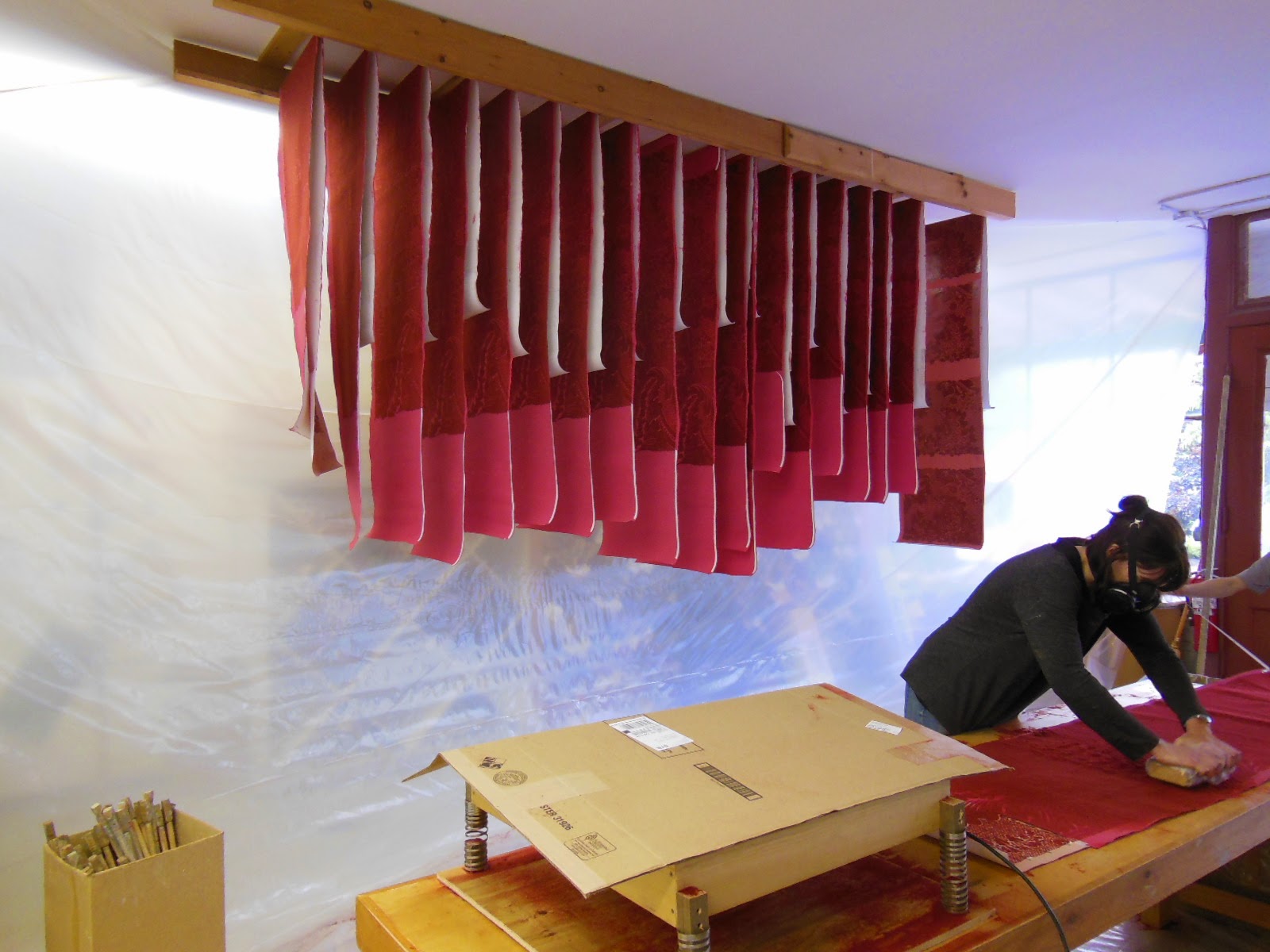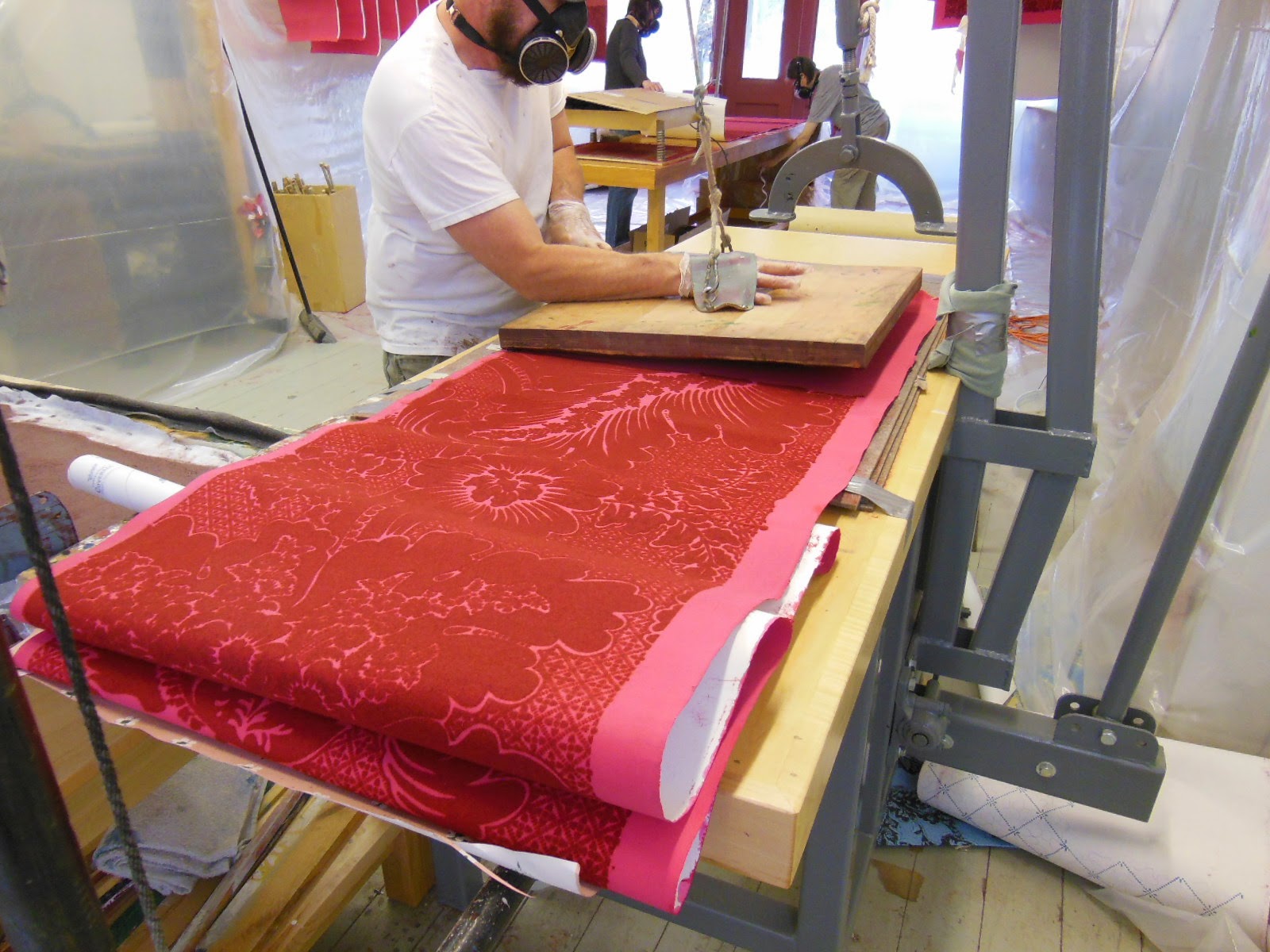Now that the crucial piece of making the plate of the pomegranate design is completed, the real work of producing the fabric is undertaken. Although it seems that this is the most straightforward part of the process, it is actually one of the most important. Watching Lynnette, who has been weaving for me on and off for twenty years, throw the shuttle back and forth hour after hour, it looks like she could do this in her sleep. But as anyone who has sat at a loom with shuttle in hand knows...to weave flawless cloth with the same number of weft shots every single inch does indeed take some skill.
Here is Lynnette threading the 1500 heddles that make up the warp...a step that can take up to 5 hours of intense focus to not make any errors.
...and then it's on to the actual weaving of the 25 yards. Lynnette is a master at this and because she is also a concert organist in her other life, her hands and feet automatically go where they need to go.
After the fabric is woven I get the exalted job of darning in any of threads that were broken in the weaving. It is a thankless job but someone has to do it!
Prior to the next step of embossing we treat the fabric with a hide glue solution so that the heat and pressure will give the finished piece that wonderful gloss and light reflecting quality.
Here is Alison, the master embosser, tacking the fabric to the plate so that the registration from one section to another is as exact as possible.
The first roll completed....
So....now it is time to celebrate a job well done. And to introduce my extraordinary colleagues who all helped to make this idea of Chris Rebollo's a reality....
... The master computer whiz....Zoe....
Lynnette, the master weaver....Alison, the master presser....and yours truly the master mind behind it all. And thank you, Chris, for giving us the opportunity to embark on this incredible adventure!

























































